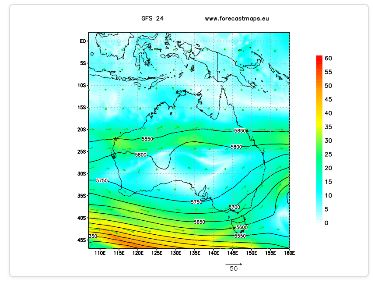Just how do Global Weather Programmes predict the longer term? Weather forecasts are a big part of our everyday life and, whether we are considering an international weather map, a weather map of Europe, or we simply are interested in a neighborhood weather map for an additional week, what you really are seeing is all depending on data obtained from huge mathematical models called numerical weather prediction (NWP) models. The first NWP models were pioneered through the English mathematician Lewis Fry Richardson, who produced, by hand, six hour weather forecasts for predicting that condition of the weather over just two points in Europe. Even this simple kind of NWP was complex plus it took him five to six weeks to make each, very sketchy and unreliable, Europe weather map. It wasn’t before advance of laptop computer that the huge computations forced to forecast the next thunderstorm can also be completed inside timeframe from the forecast itself.

The very first practical models for weather prediction didn’t enter into being before the 1950s, and yes it wasn’t before the 1970s that computers did start to become powerful enough to even start to correlate the large amounts of data variables which are found in an exact forecast map. Today, to make the international weather maps for example those made by The international Forecast System (GFS), which is a global weather prediction system managed from the Usa National Weather Service (NWS), some of the largest supercomputers on the planet are used to process the massive mathematical calculations. Every major country presently has its own weather agency who makes the next thunderstorm maps for Europe, weather, maps for Africa and weather maps for the entire world. Gadget other sources employed for weather prediction that you will often see are weather maps CMC, that happen to be those produced by the Canadian Meteorological Centre and weather maps NAVGEM, which can be manufactured by US Navy Global Environmental Model. So, how must they will really predict the worldwide weather? You may expect, predicting the weather is not easy. A
weather forecast maps worldwide is based upon historical data on what certain weather conditions triggered before and on known cyclical variations in weather patterns. Data about the current weather conditions might be collected from all worldwide, that could be countless readings from weather stations, balloons and satellites, and they’re fed in to the mathematical model to calculate what are the likely future climate conditions is going to be. To give you and notion of how complex making weather maps is, the least alternation in conditions in a single world would have a direct impact for the weather elsewhere, which is known as the butterfly effect. This is the theory that suggested how the flapping in the wings of the butterfly could influence the road a hurricane would take. Then, you need to the matter of interpretation. Some meteorologists might interpret certain conditions differently from other meteorologists which is one reason why the many weather agencies worldwide collaborate on his or her weather forecasts to generate ensemble forecasts, which, in simple terms, utilize a a few different forecasts to calculate essentially the most likely outcome. Whilst weather forecast maps are becoming a lot more reliable in the past, particularly the short term forecasts, the unpredictability of weather systems and the vast number of variables involved, signifies that, the longer-term the forecast is, the less accurate it gets. Quite simply, the next time you get trapped in the rain; don’t blame the next thunderstorm map, think about that butterfly instead.
For additional information about gfs weather visit our web page:
look at this now

